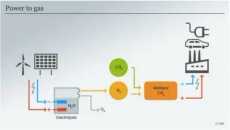Solar Lights Set to Reach USD 33.48 Billion by 2030, with a CAGR of 15.6%
The Solar Lights Market is projected to experience explosive growth in the coming decade, with its value set to soar from USD 10.5 billion in 2022 to USD 33.48 billion by 2030, representing a compound annual growth rate (CAGR) of 15.6% over the forecast period of 2023 to 2030. As concerns over sustainability and energy efficiency continue to intensify, both consumers and industries are embracing solar lighting solutions, which promise to be environmentally friendly and cost-effective. This surge in demand is anticipated to reshape various segments, including residential, commercial, and industrial applications.
Driving Forces Behind Expansion
The rapid growth of the solar lighting can be attributed to a combination of technological innovations, increasing environmental awareness, and supportive government policies. Governments worldwide are enacting favorable policies and providing subsidies to promote the adoption of renewable energy solutions like solar lighting. Furthermore, the declining cost of solar photovoltaic (PV) panels and advancements in energy storage technologies have made solar lights more affordable and efficient, further driving their adoption.
Key trends influencing the ’s trajectory include:
- Technological Advancements: Developments in LED technology and energy storage systems have enhanced the efficiency and lifespan of solar lights, making them more attractive to a broader range of consumers. Solar lights equipped with smart sensors and connected features are gaining popularity, allowing users to control lighting remotely and optimize energy consumption.
- Energy Independence: Off-grid solar lighting solutions are becoming a popular choice, particularly in regions with unreliable electricity grids or those aiming for energy independence. These solutions provide a sustainable alternative to conventional grid-powered lighting systems, offering enhanced reliability and cost savings over time.
- Sustainability Initiatives: Solar lighting aligns with the growing global emphasis on reducing carbon emissions and promoting sustainable practices. Both private companies and public organizations are investing in solar lights to reduce energy costs, minimize their environmental footprint, and comply with new regulations focused on reducing greenhouse gas emissions.
Segmentation
The solar lights is segmented based on light source, offering, grid type, application, and region, allowing for a deeper understanding of the industry dynamics and growth prospects in each segment.
- By Light Source
- LED Lights: The LED segment dominates the solar lighting due to its high efficiency, long lifespan, and superior brightness. LED technology is increasingly preferred across various applications, from residential to industrial lighting.
- Others: This category includes Compact Fluorescent Lamps (CFL) and induction lights. Though less efficient than LED lights, these technologies still play a role in specific applications, especially in regions where older solar lighting systems are in use.
- By Offering
- Hardware: This includes components such as solar panels, batteries, controllers, and light fixtures, which form the backbone of any solar lighting system. The hardware segment holds the largest share, driven by the need for durable and efficient systems that can withstand various environmental conditions.
- Software & Services: Software solutions that control, monitor, and optimize solar lighting systems are gaining prominence, especially in smart cities and large-scale industrial applications. Maintenance and installation services are also key contributors to the 's growth.
- By Grid Type
- Off-grid: Off-grid solar lights are especially popular in rural and remote areas where access to electricity is limited or nonexistent. These systems are self-sustaining and do not require connection to the electrical grid, making them ideal for providing lighting in underdeveloped regions.
- Hybrid: Hybrid solar lighting systems combine solar power with traditional grid electricity, providing a reliable solution for areas where solar energy alone may not be sufficient. This system is particularly useful in urban and suburban regions that face intermittent sunlight or need consistent lighting during nighttime hours.
- By Application
- Industrial: Solar lights are increasingly being used in industrial settings, such as factories, warehouses, and construction sites, where energy efficiency and cost savings are paramount.
- Highways and Roadways: The need for sustainable street lighting is driving demand in this segment. Solar street lights offer a reliable and energy-efficient solution for highways, roads, and urban streets, reducing the load on traditional power grids.
- Commercial: Commercial buildings, retail stores, and office complexes are adopting solar lighting to reduce energy consumption and enhance their sustainability profiles.
- Residential: The residential sector is witnessing rapid adoption of solar lighting solutions, driven by declining costs, ease of installation, and increased awareness of sustainable living practices.
- Others: This category includes niche applications such as amusement parks, playgrounds, and emergency lighting systems, which benefit from the portability and independence of solar lights.
Regional Insights
Regionally, the solar lights is expected to experience significant growth across all major geographic segments, with variations in adoption driven by local energy policies, infrastructure, and environmental conditions.
- North America: With strong governmental support for renewable energy and a well-established infrastructure, North America is expected to be a key for solar lights. States in the U.S. and provinces in Canada are offering various incentives to promote solar energy adoption, further fueling growth.
- Europe: Europe’s commitment to reducing carbon emissions and promoting green technologies is driving demand for solar lighting solutions. The European Union’s stringent regulations on energy consumption and environmental sustainability are encouraging widespread adoption in public and private sectors alike.
- Asia-Pacific: The Asia-Pacific region is expected to experience the fastest growth, driven by rapid urbanization, expanding industrialization, and favorable government initiatives aimed at promoting solar energy. Countries like China and India are at the forefront of this growth, thanks to their large populations, rising energy needs, and supportive regulatory frameworks.
- Rest of the World: Latin America, Africa, and the Middle East are also showing significant potential for solar lights, particularly in regions where electricity access remains limited. Off-grid solar lighting systems are gaining traction in rural and underserved communities, providing a reliable and sustainable lighting solution.
Conclusion
The solar lights is set to grow rapidly over the next decade, driven by advancements in technology, increasing demand for energy-efficient solutions, and global initiatives aimed at reducing carbon emissions. With diverse applications across residential, commercial, and industrial sectors, solar lighting is poised to play a key role in the global transition toward renewable energy.
As the expands, manufacturers, suppliers, and investors have an opportunity to capitalize on the growing demand for solar lights, while contributing to a more sustainable and environmentally conscious future.
Read More Details @ https://www.snsinsider.com/reports/solar-lights-market-3208
Contact Us:
Akash Anand – Head of Business Development & Strategy
Phone: +1-415-230-0044 (US) | +91-7798602273 (IND)
SNS Insider Offering/ Consulting Services:
Go To Market Assessment Service




